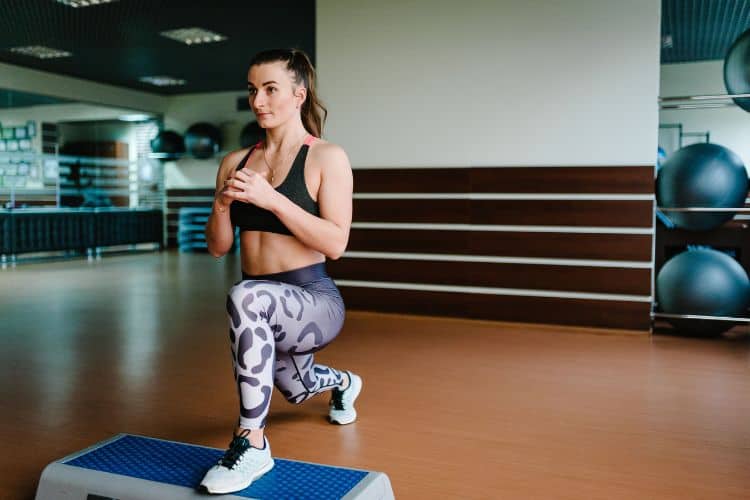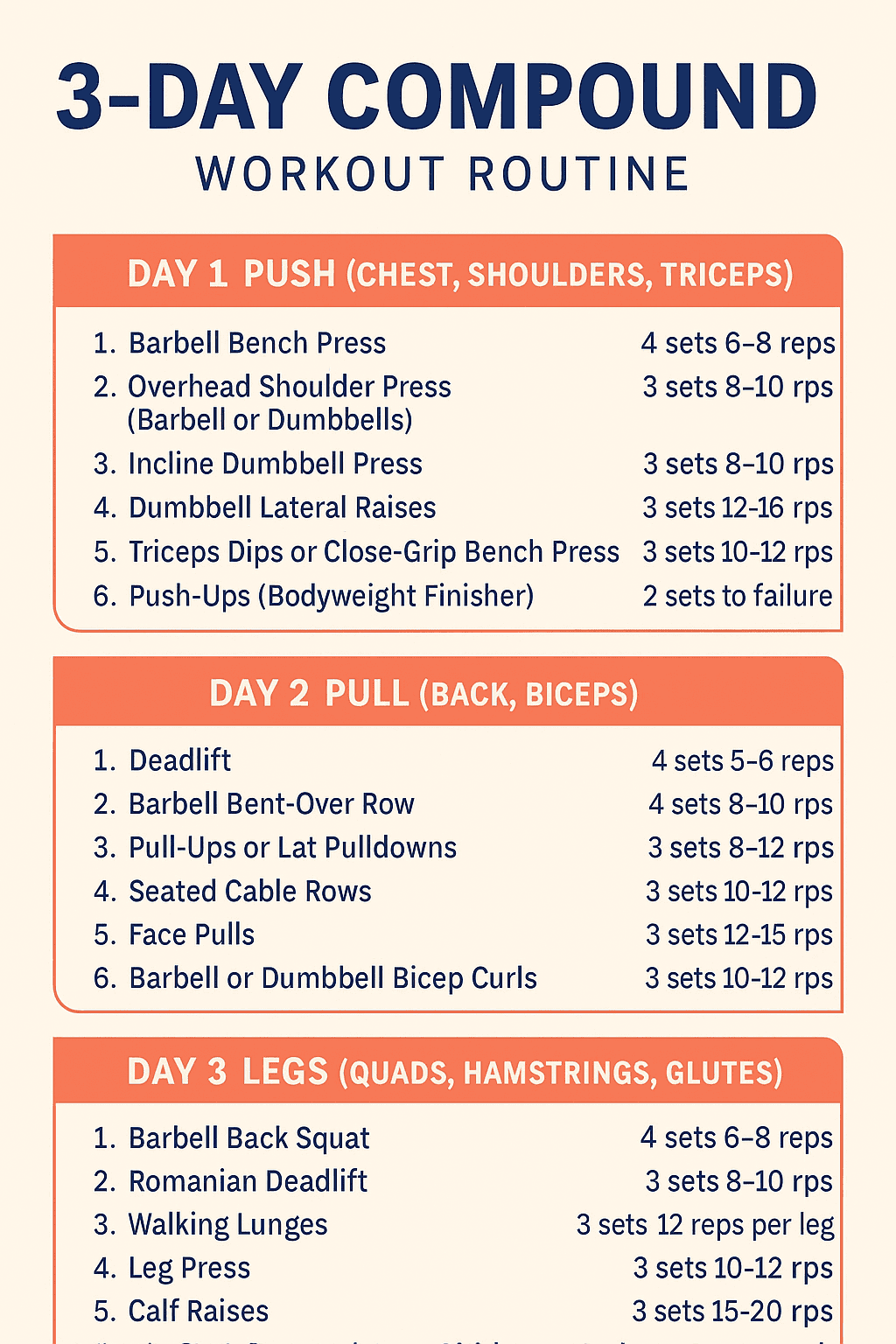Sign up for workout ideas, training advice, reviews of the latest gear and more.






When it comes to building strength, muscle, and stamina efficiently, compound exercises are the foundation of every great program. A 3-day compound workout routine is one of the most time-efficient and effective training splits for both beginners and experienced lifters. It helps you train all the major muscle groups multiple times per week while allowing enough rest and recovery between sessions.
In this guide, you’ll learn how to structure a 3-day compound workout routine, why compound exercises are crucial for full-body development, and how to progressively overload your muscles for lasting results.
Compound exercises are movements that work multiple joints and muscle groups at once. Unlike isolation exercises that target one muscle (like bicep curls or triceps kickbacks), compound lifts engage several muscles, which helps you lift heavier weights and burn more calories in less time.
A 3-day split is perfect for balancing intensity and recovery. Training three times per week allows your body enough time to rest, rebuild, and grow stronger between workouts. This schedule fits seamlessly into most lifestyles while still delivering impressive results.
When performing compound lifts, the body releases more anabolic hormones, such as testosterone and growth hormone, compared to isolation movements. These hormones promote muscle protein synthesis, leading to faster muscle gain and improved recovery.
Moreover, compound exercises stimulate the central nervous system (CNS) more effectively, teaching the body to coordinate large muscle groups—this neural adaptation leads to long-term strength improvements.
By combining progressive overload (gradually increasing resistance) and compound lifts, your muscles continually adapt, resulting in consistent growth and improved performance.

This 3-day program focuses on push, pull, and leg days to ensure every major muscle group is trained evenly. Each workout includes a mix of heavy compound lifts and accessory movements that support your strength development.
You can space your workouts like this:
This spacing allows for optimal muscle recovery between sessions.
The first day targets all pushing muscles—primarily the chest, shoulders, and triceps. These muscles work together in pressing movements like bench presses and overhead presses.
Start with dynamic stretches and light cardio:
Stretch your chest, shoulders, and triceps for 5 minutes to enhance recovery.
This session focuses on pulling movements that strengthen the back, traps, rear delts, and biceps. These exercises improve posture, pull strength, and overall symmetry.
Perform static stretches for the lats, traps, and arms.
The final day targets the lower body—quads, hamstrings, glutes, and calves—and includes compound lifts that build serious strength and athleticism.
Stretch your hamstrings, quads, and calves for 5 minutes.
The foundation of long-term progress is progressive overload, meaning you gradually increase the stress placed on your muscles over time. This can be achieved by:
Track your workouts to ensure consistent improvement. Small increases—like adding 5 lbs per week to your major lifts—can lead to significant gains over time.
Proper form prevents injuries and ensures you’re targeting the right muscles. Use lighter weights until you master each movement.
Rest days are crucial for growth. Sleep at least 7–8 hours per night and take rest days seriously.
Consume a diet rich in lean proteins, complex carbs, and healthy fats. Aim for a slight calorie surplus if your goal is muscle gain, or a deficit for fat loss.
Stick to your schedule. Compound strength comes from repetition, not random workouts.
Never skip your warm-up or cool-down—it helps prevent strains and enhances flexibility.
Keep a workout journal or app log to track weights, reps, and sets. Seeing progress keeps you motivated.
| Week | Goal | Focus |
|---|---|---|
| Week 1 | Learn form | Master each lift at moderate weights |
| Week 2 | Build consistency | Increase weights slightly (5–10%) |
| Week 3 | Progressive overload | Add an extra set to key lifts |
| Week 4 | Deload & recover | Reduce volume to allow muscle repair |
Repeat the cycle after Week 4, gradually increasing weights and intensity.
Yes! Beginners benefit most from compound movements since they build a strong foundation quickly. Start with lighter weights and focus on technique.
Absolutely. You can add 1–2 isolation moves per session (like bicep curls or triceps pushdowns) to enhance weak areas without compromising recovery.
Each session typically takes 45–60 minutes, depending on rest intervals (60–90 seconds for compound lifts, 30–45 seconds for accessories).
Yes. Dumbbells are excellent alternatives that engage stabilizer muscles and improve balance.
Your core is engaged in nearly every compound lift, but you can add extra ab work (planks, hanging leg raises) twice per week.
A 3-day compound workout routine is one of the most efficient and effective ways to build total-body strength, muscle, and endurance. It saves time, promotes balance, and keeps your training consistent without overloading your schedule.
By focusing on big lifts—like squats, deadlifts, bench presses, and rows—you’ll see measurable progress week after week. Combine this with a healthy diet, adequate rest, and consistent effort, and you’ll sculpt a stronger, leaner physique that performs as good as it looks.
If you’re looking for a practical, powerful, and time-efficient strength training plan, this 3-day compound workout is the perfect foundation for your fitness journey.
Want more workout and video guide?
Follow us on Pinterest, Facebook, and Subscribe to our Newsletter and Stay tuned for FREE downloads of our App coming soon!
Stay up to date on the latest women’s health, fitness and lifestyle trends and tips.